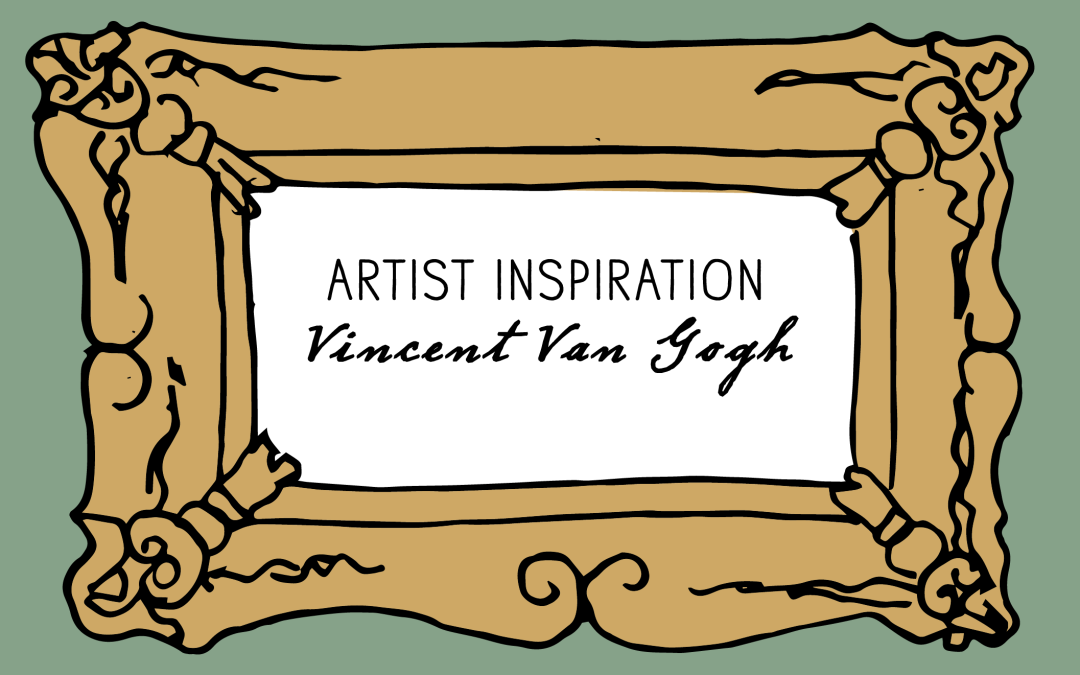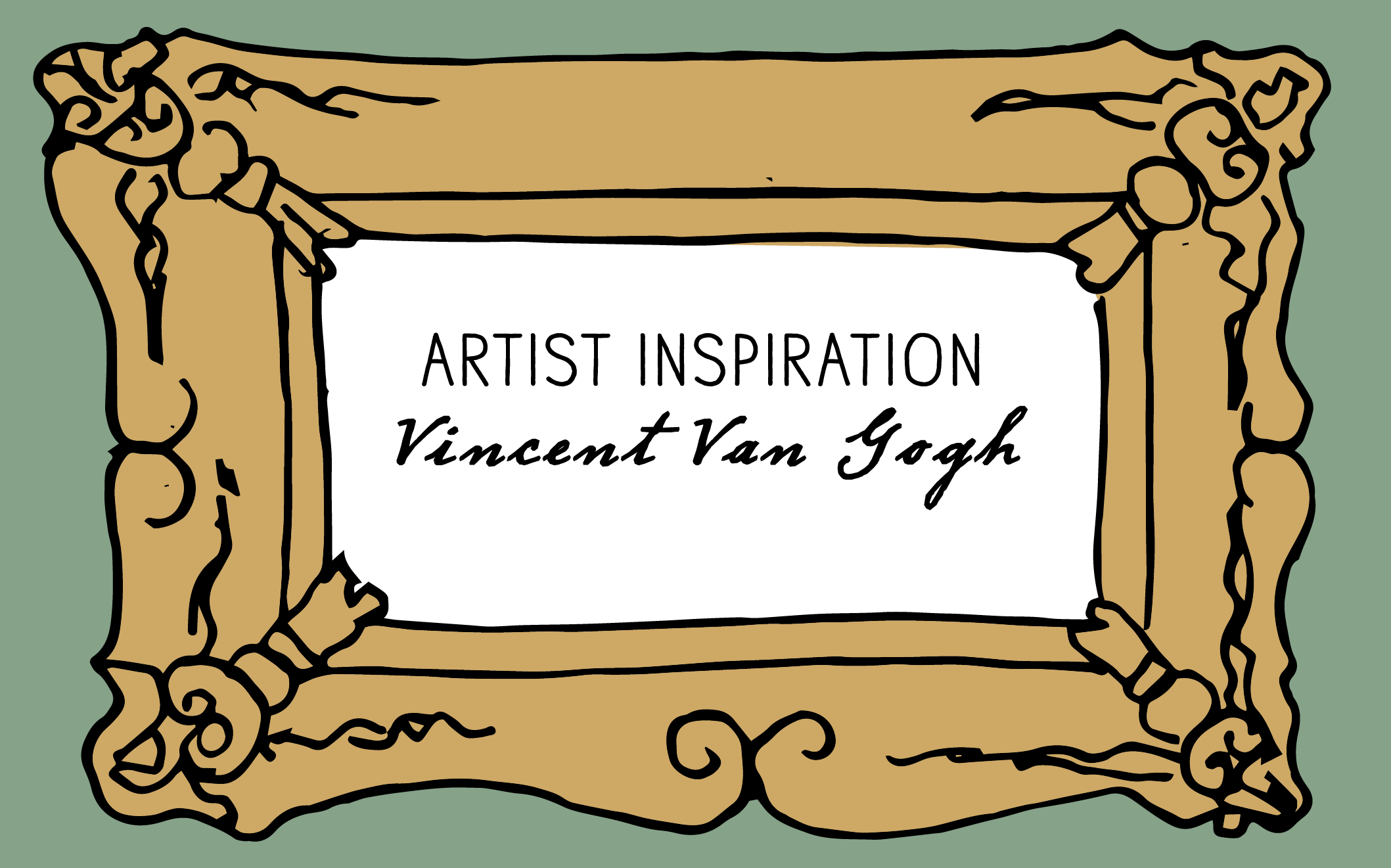
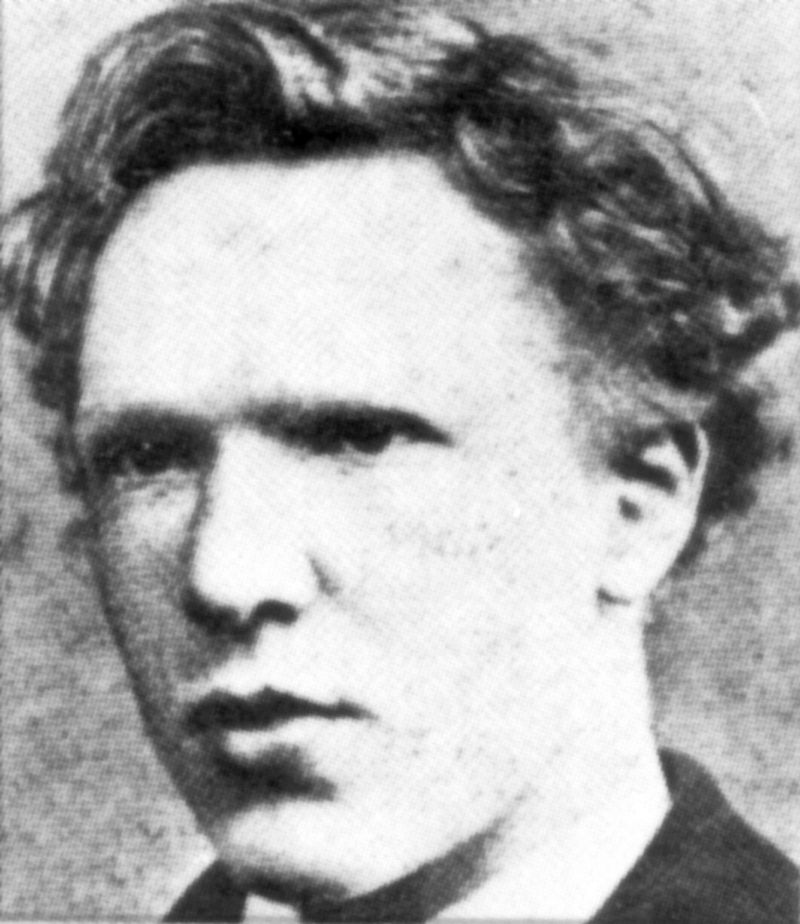
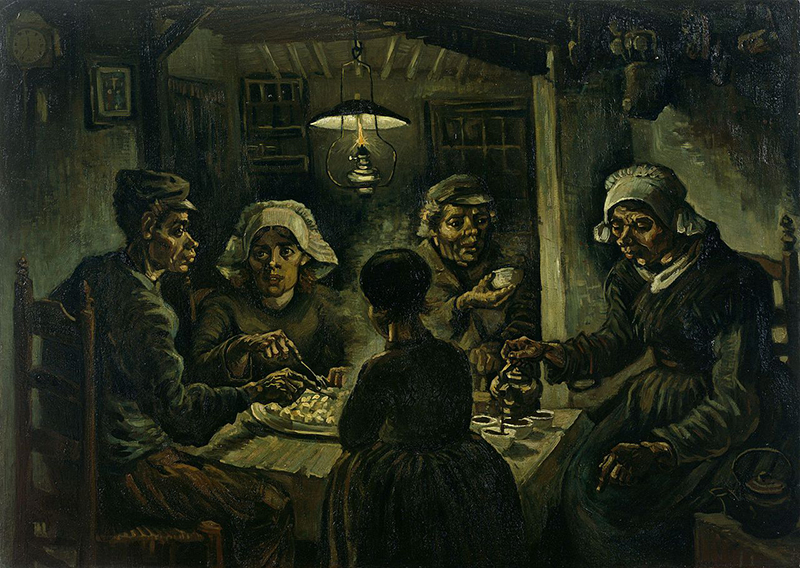
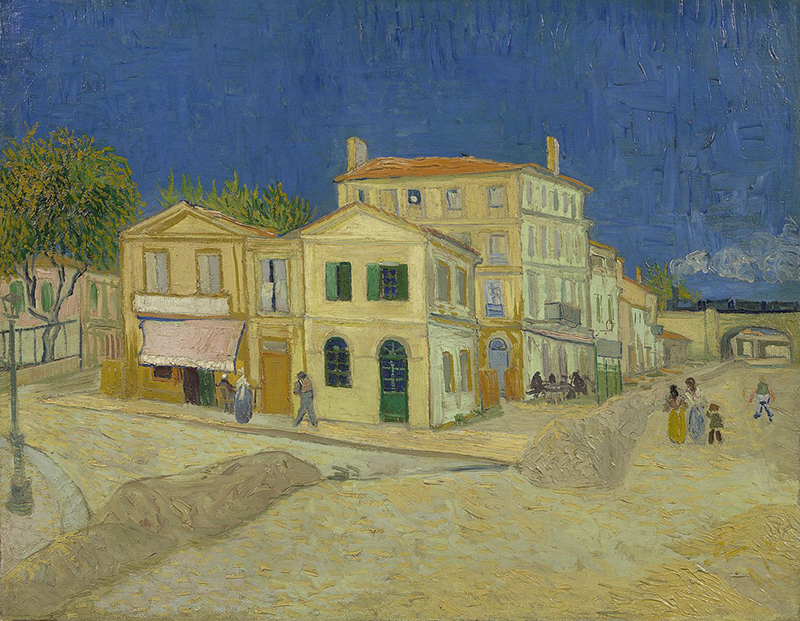
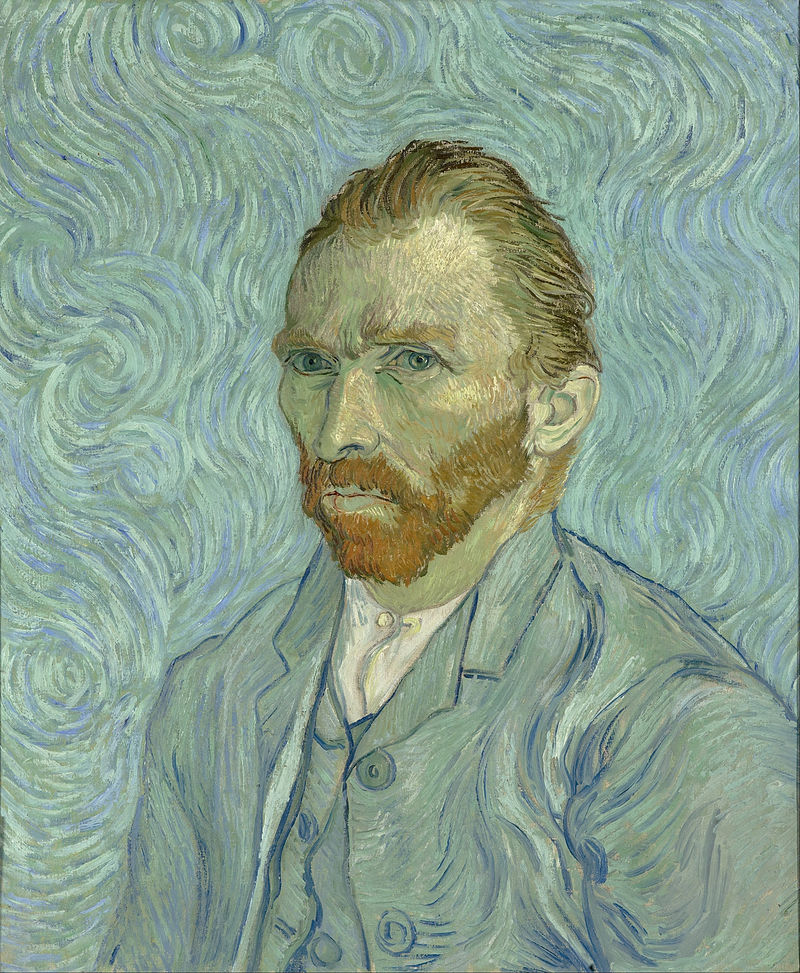
Vincent Van Gogh(1853–1890), was a Dutch post-impressionist painter whose work had a an immense influence on 20th-century art even though his work was largely ignored until after his death in 1980. He spent years drifting in and out of ill health and solitude, and didn’t pick up painting until his late twenties. Most of his works were completed during the last two years of his life. His work is characterized by the bright colors and broad strokes that developed his uniquely characteristic painting style.
His style really emerged after taking refuge in Arles France. It is thought that he moved there with the idea of building a utopian art colony. There he convinced Gauguin to visit and the two became friends. However, tensions over Van Gogh’s feelings that Gauguin was going to desert him led up to the famous incident of Van Gogh cutting of his ear. It’s implied that Van Gogh cut off his ear as a momento for Gauguin after he found out that he was leaving. From there, Van Gogh descended into madness suffering from hallucinations and delusions, and was committed to the Saint Paul-de-Mausole in 1889.
On July 27, 1890 Van Gogh shot himself in the chest with a revolver, but did not kill him immediately. He was able to walk back to the hospital, but there was no surgeon present to remove the bullet. He died a day later from an infection.
The Potato Eaters, 1885 / The Yellow House, 1888 / Self-Portrait, September 1889

